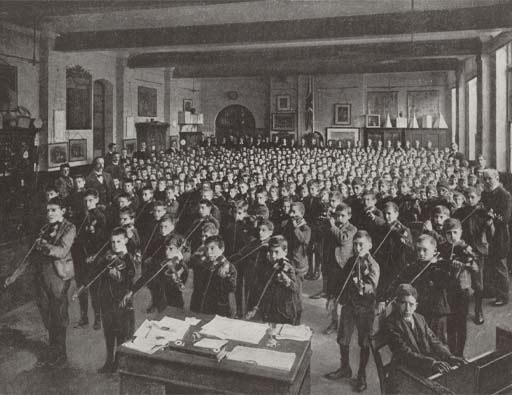4 Evaluating the Fenwick scheme
The Fenwick scheme offered correctional, rather than transformational, education. In 1870, a national system of elementary schooling was finally introduced in England and Wales. Local authorities were permitted to compel attendance until legislation in 1880 made attendance compulsory for all children aged between 5 and 10 years. The majority of children left school having achieved Standard III or IV at most. The aim of the Fenwick scheme was only to increase the literacy and numeracy of prisoners to the level which the state had mandated that all children achieve in elementary school.

Having said that, basic literacy and numeracy provided a key to other activities which could be transformational, such as reading for pleasure or self-instruction (aiding self-development, reflection and further skills development), writing to friends and family outside the prison (maintaining contacts to aid rehabilitation on release), and religious or moral instruction. The problem with this scheme was establishing the connection between skills and their use (library books, for example, were denied to all who had not passed Standard II), and in nurturing a pleasure of learning.
Furthermore, even after the roll out of this scheme, differences persisted in the provision of education in local prisons. Some chaplains used their discretion to include prisoners aged over 40. Conversely, relatively few prisoners were excluded on the basis of ‘limited capacity’, despite the circulation of ideas about mental and physical degeneracy in criminals (which you looked at in Session 5).
At some prisons, prisoners who had reached Standard III were permitted to remain at school and continue their studies ‘for the sake of the good influence that was being brought upon [them]’ (Mitford Committee, 1896, p. 33). At others, levels of achievement were strictly interpreted or even reduced.
At Pentonville (which became a local prison in 1885), prisoners were passed for writing if they could write a simple sentence such as ‘I had just received your letter’ fairly well – and that did not include the ability to spell the words correctly. Instruction in arithmetic at Pentonville was limited to simple addition (Mitford Committee, 1896, p. 6). While some prisoners received all of the time for tuition set out in the scheme, others received more or less, depending on their abilities and the time the teacher (now also a warder – which you’ll look at in Section 6) was allowed to devote to teaching duties.
